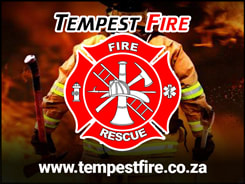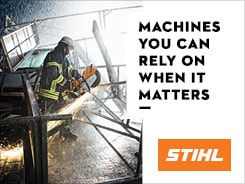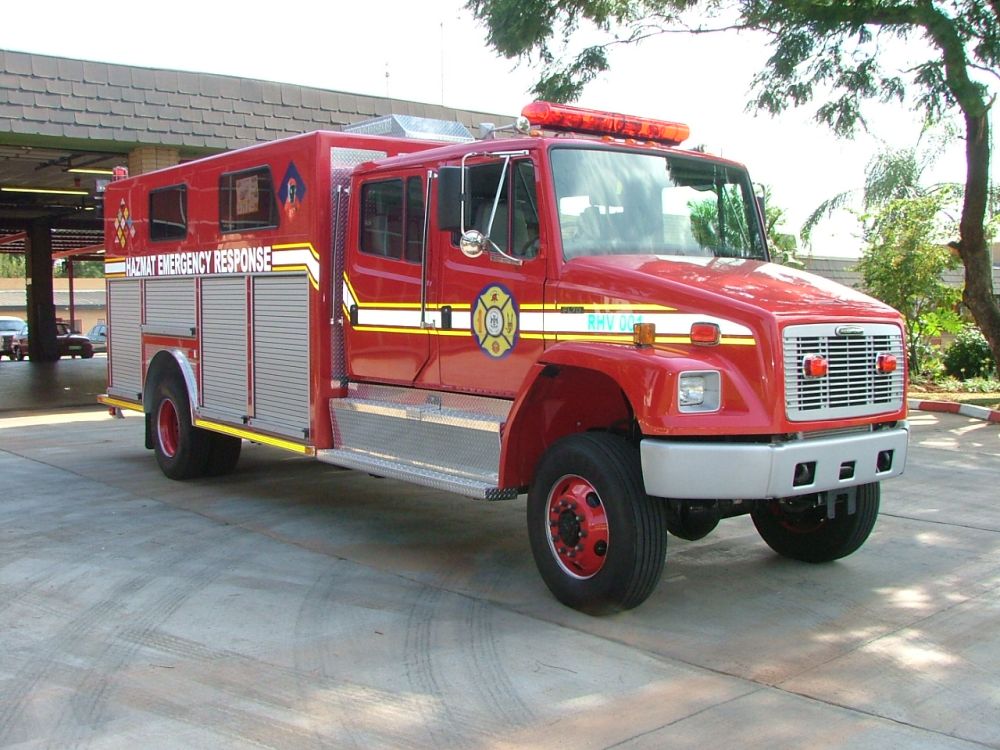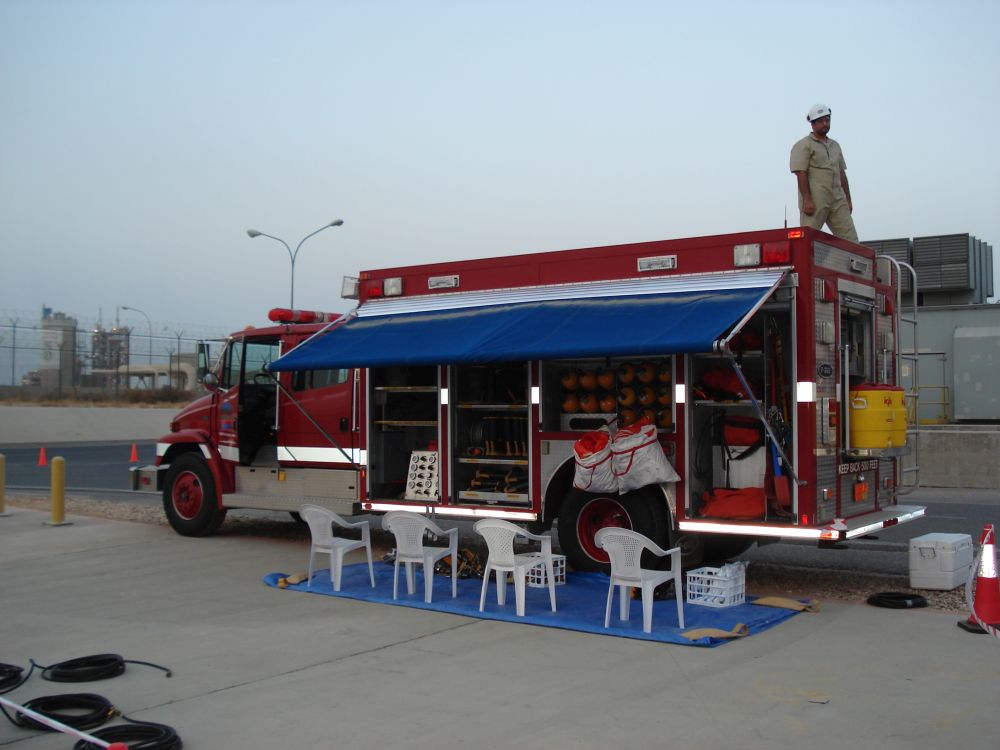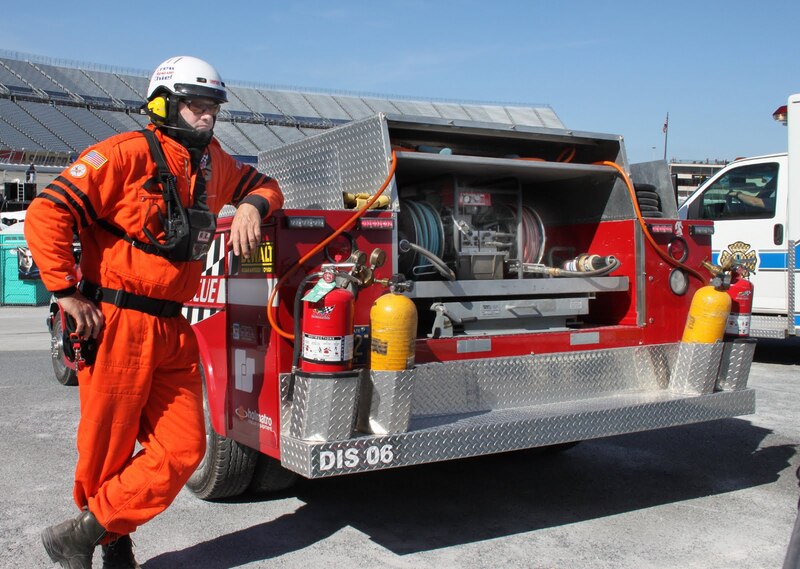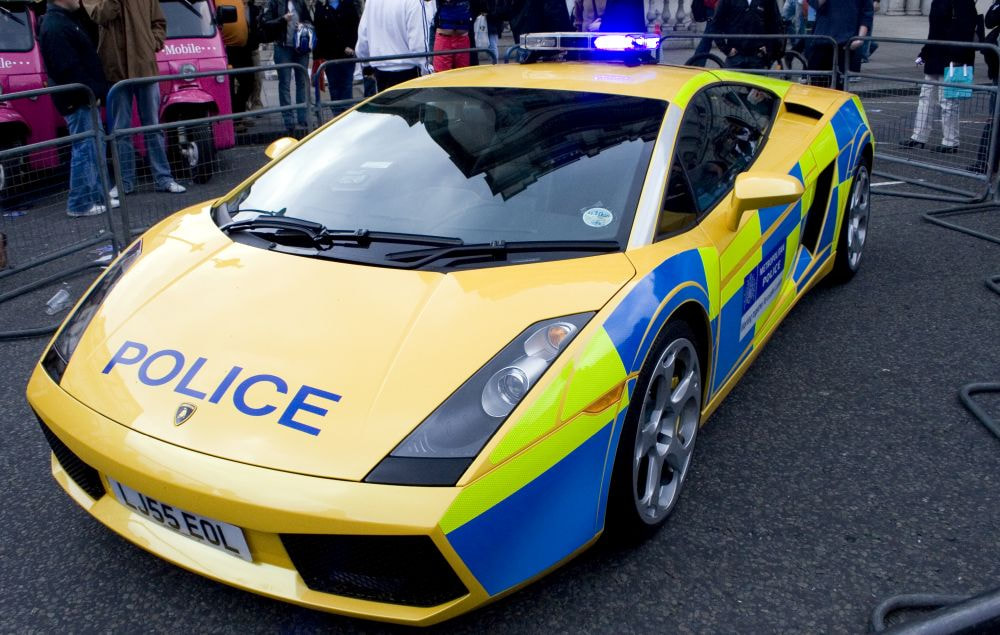- Home
- Magazines
-
Newsletters
- 19 July 2024
- 12 July 2024
- 5 July 2024
- 28 June 2024
- 14 June 2024
- 7 June 2024
- 31 May 2024
- 24 May 2024
- 17 May 2024
- 10 May 2024
- 3 May 2024
- 26 April 2024
- 19 April 2024
- 12 April 2024
- 22 March 2024
- 15 March 2024
- 8 March 2024
- 1 March 2024
- 23 February 2024
- 16 February 2024
- 9 February 2024
- 26 January 2024
- 19 January 2024
- 12 January 2024
- 22 December 2023
- 1 December 2023
- 24 November 2023
- 10 November 2023
- 3 November 2023
- 27 October 2023
- 20 October 2023
- 13 October 2023
- 6 October 2023
- 29 September 2023
- 22 September 2023
- 15 September 2023
- 8 September 2023
- 25 August 2023
- 18 August 2023
- 11 August 2023
- 4 August 2023
- 28 July 2023
- 21 July 2023
- 14 July 2023
- 7 July 2023
- 30 June 2023
- 23 June 2023
- 15 June 2023
- 2 June 2023
- 26 May 2023
- 19 May 2023
- 12 May 2023
- 5 May 2023
- 28 April 2023
- 21 April 2023
- 14 April 2023
- 6 April 2023
- 31 March 2023
- 24 March 2023
- 17 March 2023
- 10 March 2023
- 3 March 2023
- 24 February 2023
- 17 February 2023
- 10 February 2023
- 3 February 2023
- 27 January 2023
- 13 January 2023
- 22 December 2022
- 15 December 2022
- 9 December 2022
- 2 December 2022
- 25 November 2022
- 18 November 2022
- 11 November 2022
- 4 November 2022
- Advertising
- Subscribe
- Articles
-
Galleries
- AOSH Firexpo 2024
- Midvaal Fit to Fight Fire 2024
- WoF KNP 2023 Gallery
- TFA 2023 Gallery
- DMISA Conference 2023
- ETS 2023 Gallery
- Drager Fire Combat and Rescue Challenge 2023
- AOSH Firexpo 2023
- Midvaal Fit to Fight Fire
- WC IFFD 2023
- NMU 13th Fire Management Symposium 2022
- JOIFF Africa Conference 2022
- ETS 2022 Gallery
- TFA 2022 Gallery
- IFFD 2018
- SAESI
- TFA
- WRC 2018
- WRC 2019
- A-OSH/Securex
- IFE AGM 2019
- ETS Ind Fire Comp Nov 2019
- ETS Challenge 2021
- Drager launch
- Drager Fire Combat and Rescue Challenge 2022
- TFA
- Contact
- Home
- Magazines
-
Newsletters
- 19 July 2024
- 12 July 2024
- 5 July 2024
- 28 June 2024
- 14 June 2024
- 7 June 2024
- 31 May 2024
- 24 May 2024
- 17 May 2024
- 10 May 2024
- 3 May 2024
- 26 April 2024
- 19 April 2024
- 12 April 2024
- 22 March 2024
- 15 March 2024
- 8 March 2024
- 1 March 2024
- 23 February 2024
- 16 February 2024
- 9 February 2024
- 26 January 2024
- 19 January 2024
- 12 January 2024
- 22 December 2023
- 1 December 2023
- 24 November 2023
- 10 November 2023
- 3 November 2023
- 27 October 2023
- 20 October 2023
- 13 October 2023
- 6 October 2023
- 29 September 2023
- 22 September 2023
- 15 September 2023
- 8 September 2023
- 25 August 2023
- 18 August 2023
- 11 August 2023
- 4 August 2023
- 28 July 2023
- 21 July 2023
- 14 July 2023
- 7 July 2023
- 30 June 2023
- 23 June 2023
- 15 June 2023
- 2 June 2023
- 26 May 2023
- 19 May 2023
- 12 May 2023
- 5 May 2023
- 28 April 2023
- 21 April 2023
- 14 April 2023
- 6 April 2023
- 31 March 2023
- 24 March 2023
- 17 March 2023
- 10 March 2023
- 3 March 2023
- 24 February 2023
- 17 February 2023
- 10 February 2023
- 3 February 2023
- 27 January 2023
- 13 January 2023
- 22 December 2022
- 15 December 2022
- 9 December 2022
- 2 December 2022
- 25 November 2022
- 18 November 2022
- 11 November 2022
- 4 November 2022
- Advertising
- Subscribe
- Articles
-
Galleries
- AOSH Firexpo 2024
- Midvaal Fit to Fight Fire 2024
- WoF KNP 2023 Gallery
- TFA 2023 Gallery
- DMISA Conference 2023
- ETS 2023 Gallery
- Drager Fire Combat and Rescue Challenge 2023
- AOSH Firexpo 2023
- Midvaal Fit to Fight Fire
- WC IFFD 2023
- NMU 13th Fire Management Symposium 2022
- JOIFF Africa Conference 2022
- ETS 2022 Gallery
- TFA 2022 Gallery
- IFFD 2018
- SAESI
- TFA
- WRC 2018
- WRC 2019
- A-OSH/Securex
- IFE AGM 2019
- ETS Ind Fire Comp Nov 2019
- ETS Challenge 2021
- Drager launch
- Drager Fire Combat and Rescue Challenge 2022
- TFA
- Contact
|
29 September 2023
|
Featured FRI Magazine article: Fire service special operations by Colin Deiner (FRI Vol 1 no 5)
https://www.frimedia.org/uploads/1/2/2/7/122743954/f_r_vol1no5_lr.pdf
This week’s featured Fire and Rescue International magazine article is: Fire service special operations (FRI Vol 1 no 5) written by Colin Deiner. We will be sharing more technical/research/tactical articles from Fire and Rescue International magazine on a weekly basis with our readers to assist in technology transfer. This will hopefully create an increased awareness, providing you with hands-on advice and guidance. All our magazines are available free of charge in PDF format on our website and online at ISSUU. We also provide all technical articles as a free download in our article archive on our website.
Fire service special operationsBy Colin Deiner
During a recent discussion with a former colleague, who is now a chief fire officer of a fairly large fire department, I was interested to hear his thoughts on the dilemma facing many emergency services, which have come about following the widespread personnel cuts and resulting staff shortages.
His opinion was that due to the fact that emergency services have to deal with an increased number of “routine” incidents such as informal structural fires and motor vehicle accidents, there are not always sufficient resources available to concentrate on specialised operations such as technical rescue and hazardous materials response.
In most services it has led to a situation where almost anyone can respond to a complex emergency and be expected to bring it to a successful conclusion. “We just don’t have the capacity to deal with special operations” is the call. Problem is…it is still going to happen and we are expected to respond to it.
With this in mind I will attempt in this article to come up with a solution to this challenge.
What are special operations?
A special operations unit is made up of highly trained emergency responders who are able to respond to and conduct operations of a technical nature, usually in extremely dangerous situations. Special operations staff is generally experienced fire fighters who have been trained to a high level of proficiency in rescue and Hazmat response and are able to operate as a small team separate from other units on the scene but still stay within the command system. They can however also be utilised to take command of groups of fire fighters/rescuers and use their expertise to guide the lesser experienced people generally at task level.
My personal experience of this methodology happened in 1999 when as part of a South African Urban Search and Rescue response team to the Izmet earthquake in Turkey; we delegated each team member to a number of Turkish soldiers who, through the direction of the rescue specialist, performed selected debris removal tasks on a collapsed eight storey residential structure.
The notion that a special operations unit is one team made up of “supermen” who are able to successfully deal with any type of emergency is false and should not even be considered as an option. A special operations division generally forms part of a fire services operations division and is comprised of several specialised response teams that handle a wide variety of both high-risk and low-frequency type events.
Many fire services in the USA initially employed a special operations capacity to complement their ‘engine and truck company’ philosophy. These teams were called ‘rescue squads’ and used to assist structural fire fighting teams by conducting search and rescue operations at fire where persons were unaccounted for and possibly still trapped inside involved structures. With the increased focus on hazardous materials response in the 1980s, special operations divisions were expanded to include Hazmat response into their area of responsibility. Over the years, other specialised units, such as the marine response and technical rescue units were added. In certain services, where a combined fire and EMS service are provided, special operations units will also include medical response teams (medical strike teams).
Let us take a closer look at each function:
Technical rescue
Technical rescue can be described as any type of rescue other than light motor vehicle rescue. Light motor vehicle rescue should be seen as an initial response activity and should be within the capability of any first response fire/rescue unit.
Examples of technical rescue incidents are:
Rescue squads are proficient in a wide range of equipment which is usually carried on a custom built vehicle. These “rescue squad” or “heavy rescue” vehicles carry an array of special equipment such as the hydraulic rescue tools ie jaws-of-life, wooden shoring and sheeting (for trench rescue), generators, winches, hi-lift jacks, cranes, exothermic cutting torches, circular saws, rope rescue equipment, confined space entry and ventilation equipment and other forms of heavy equipment unavailable on standard engines.
When planning and scoping a vehicle of this nature, it is vital to ensure that sensitive pieces of equipment such as rescue ropes and confined space air monitoring probes are stored away from abrasive equipment or chemicals that may compromise its integrity.
Equipment may be unused for a fair period of time and, if not regularly checked and maintained, could fail you when you least need or expect it.
The shear bulk of shoring timbers creates a challenge when loading a technical rescue unit which has led to many departments employing heavy duty trailers, marine containers or modified, de-commissioned fire trucks to carry this resource. A fine example of this ingenuity was a department in the USA who once modified a ladder truck and refitted it to carry a large stock of long timbers and trench sheeting panels. An important consideration here is the inclusion of a mobile cutting station with the necessary grips and measuring tools.
Hazmat response
Typically your Hazmat response team should be able to respond to any of the following three types of incidents:
Intentional releases
A response to an intentional release would routinely be when hazardous chemicals are knowingly and illegally dumped into waterways, drains, rubbish dumps, unlicensed landfills and the environment in general. It could also include the burning of products that may release toxic smoke and vapours into the atmosphere. A major risk, which has become more prevalent in recent years, is the proliferation of clandestine drug laboratories (labs). These labs cause serious health and safety issues within communities and require a large amount of time and resources to dismantle them and decontaminate the area. Many of these labs are set up in populated residential areas and booby trapped which increase the risk exponentially.
Accidental releases
This is the most common type of Hazmat incident and includes all types of spills and leaks of toxic agents resulting from collisions, container failure, fires, floods and human error. The phrase “knowledge is power” is of great importance when dealing with such incidents. A common sense approach by a few well trained Hazmat technicians is far more valuable than a large uncoordinated response.
Acts of terrorism
Chemical, biological, radiological, nuclear and explosives (CBRNE) related terrorism is the intentional release of deadly biological or chemical agents, such as Anthrax or nerve gas, into the general population. It may also include the detonation of a range of improvised explosive devices. The threat of such an incident would prompt the expansion of the department’s incident command system to include a medical strike team.
The Hazmat team would be responsible for initial site safety, the rescue of any trapped victims, neutralisation of the hazardous agent and product run-off control (if required). The medical strike team would conduct the medical treatment of the victims that this type of terrorist attack targets.
Since the 2010 Football World Cup most metropolitan (and other host city) emergency services have established an integrated Hazmat response plan with the South African Police Services (SAPS) and South African Defence Force (SANDF). The SAPS would mainly be responsible for securing the scene, crime scene investigation and the disposal of explosive devices while the specialised SANDF teams would assist with detection of hazardous chemicals, sampling and mass casualty decontamination. This programme was deployed with great success during the 2010 World Cup and should be encouraged to continue and improve. The theory that terrorists don’t attack prepared events or on significant days still holds true (remember that 11 September was just another day until 2001).
Marine/water response
Marine response is mainly employed in coastal services but a fair number of very effective water rescue units have been established in inland regions. The proliferation of informal settlements close to waterways in many cities and the subsequent flooding of dwellings in these settlements have made the establishment of swift water rescue teams a necessity. A major challenge confronting many emergency services is where to place these teams in relation to the most severe, localised flooding risks. In most cases the risk is too widespread for services to cover and it is then important that first responders are trained in the fundamentals of river safety and at least be able to perform a safe shore based rescue. The optimum placement of sufficient swift water rescue technicians is, however, still the first prize.
In coastal cities, marine response team personnel provide technical support to incident commanders at marine incidents. These include search and rescue at shipboard fires, dive rescues and body recoveries, confined space rescues, hazardous material releases aboard ships, flooding and pollution incidents.
The versatility of marine response personal coupled with the low frequency of water related incidents, make them an ideal support resource for incident commanders during confined space, hazardous materials and fire search and rescue incidents.
Some of the more enterprising fire chiefs along the South African coast have tapped into the high quality resources of the National Sea Rescue Institute (NSRI) to complement their own water rescue capacity. This is an example of using all available and relevant resources as a force multiplier for special operations.
Medical strike team
This unit consists of advanced life support paramedics who will provide support to technicians during hazardous materials, technical rescue and water rescue incidents as well as providing advice to incident command during mass casualty incidents. Once again, this group does not perform all medical treatment activities during a mass casualty incident but is responsible for the overall triage and patient management. During a specialised technical operation they will however assume control over the patient(s) and should therefore, over and above their general paramedic training, specialise in the type of patient care that may be required for these types of incidents.
So how does it all come together?
Already I’m hearing people say “That’s all very nice but I don’t even have enough staff to respond to the routine calls in my city. Where am I going to get all these extra people to form a special operations unit?” I’ve also heard arguments like: “Why should I employ staff and train them at great cost to sit around and wait for the odd special operations response which only makes up a small percentage of my incident load?”
In the preceding paragraphs I have alluded to the ways that some services have gone about “doubling-up” on some of the specialised functions. The need for special operations response might be rare but it is necessary and unfortunately when they are needed, the incident is normally high profile and will be on the front page of tomorrow’s newspaper and maybe tonight’s television news (together with how well or badly the fire department managed it).
The answer therefore lies in optimising the scarce number of specially trained individuals in a number of areas to (a) substantiate their existence and (b) keep them interested (there is nothing more dangerous than a bored fire fighter).
Let’s see how we do this for each discipline:
These technicians can also staff a rescue pumper for routine fire/rescue response. The rescue pumper can be supported by a hazardous materials support truck which carries all the required equipment including level A, B and C personal protective equipment (PPE), decontamination equipment, spill and leak kits, foams and detection equipment. For a hazardous materials response, the rescue pumper and support truck respond together.
The technical rescue unit can be staffed with a minimum of four members on each shift. These members can also be utilised to staff an aerial device (ladder truck) where a lot of their skills can also be employed. As with a hazardous materials support truck a technical rescue support truck can be provided which carries all the required equipment to support rope rescue, trench rescue, confined space rescue, swift water rescue, elevator rescue and structural collapse. For a technical rescue response, the support truck can respond with all crew members on board or the crew can split and respond with the ladder truck as well. The ladder truck can provide a height advantage point as well as those rope rigging anchor points which are never anywhere close to where you need them.
Conclusion
The ideas put forward in this article are definitely not a concise solution to the challenges facing fire services in South Africa when it comes to providing special operations response. I have tried to throw some ideas into how to optimise limited staff to establish an effective special operations system which is both cost and operationally effective.
I hope this article will stimulate further debate on a subject which we do not dare leave by the wayside.
Unless of course we want to be the idiot on the seven o’clock news.
This week’s featured Fire and Rescue International magazine article is: Fire service special operations (FRI Vol 1 no 5) written by Colin Deiner. We will be sharing more technical/research/tactical articles from Fire and Rescue International magazine on a weekly basis with our readers to assist in technology transfer. This will hopefully create an increased awareness, providing you with hands-on advice and guidance. All our magazines are available free of charge in PDF format on our website and online at ISSUU. We also provide all technical articles as a free download in our article archive on our website.
Fire service special operationsBy Colin Deiner
During a recent discussion with a former colleague, who is now a chief fire officer of a fairly large fire department, I was interested to hear his thoughts on the dilemma facing many emergency services, which have come about following the widespread personnel cuts and resulting staff shortages.
His opinion was that due to the fact that emergency services have to deal with an increased number of “routine” incidents such as informal structural fires and motor vehicle accidents, there are not always sufficient resources available to concentrate on specialised operations such as technical rescue and hazardous materials response.
In most services it has led to a situation where almost anyone can respond to a complex emergency and be expected to bring it to a successful conclusion. “We just don’t have the capacity to deal with special operations” is the call. Problem is…it is still going to happen and we are expected to respond to it.
With this in mind I will attempt in this article to come up with a solution to this challenge.
What are special operations?
A special operations unit is made up of highly trained emergency responders who are able to respond to and conduct operations of a technical nature, usually in extremely dangerous situations. Special operations staff is generally experienced fire fighters who have been trained to a high level of proficiency in rescue and Hazmat response and are able to operate as a small team separate from other units on the scene but still stay within the command system. They can however also be utilised to take command of groups of fire fighters/rescuers and use their expertise to guide the lesser experienced people generally at task level.
My personal experience of this methodology happened in 1999 when as part of a South African Urban Search and Rescue response team to the Izmet earthquake in Turkey; we delegated each team member to a number of Turkish soldiers who, through the direction of the rescue specialist, performed selected debris removal tasks on a collapsed eight storey residential structure.
The notion that a special operations unit is one team made up of “supermen” who are able to successfully deal with any type of emergency is false and should not even be considered as an option. A special operations division generally forms part of a fire services operations division and is comprised of several specialised response teams that handle a wide variety of both high-risk and low-frequency type events.
Many fire services in the USA initially employed a special operations capacity to complement their ‘engine and truck company’ philosophy. These teams were called ‘rescue squads’ and used to assist structural fire fighting teams by conducting search and rescue operations at fire where persons were unaccounted for and possibly still trapped inside involved structures. With the increased focus on hazardous materials response in the 1980s, special operations divisions were expanded to include Hazmat response into their area of responsibility. Over the years, other specialised units, such as the marine response and technical rescue units were added. In certain services, where a combined fire and EMS service are provided, special operations units will also include medical response teams (medical strike teams).
Let us take a closer look at each function:
Technical rescue
Technical rescue can be described as any type of rescue other than light motor vehicle rescue. Light motor vehicle rescue should be seen as an initial response activity and should be within the capability of any first response fire/rescue unit.
Examples of technical rescue incidents are:
- Structural collapse
- Trench collapse
- High angle rope rescues
- Swift water rescues
- Confined space emergencies
- Heavy machinery and transportation incidents.
Rescue squads are proficient in a wide range of equipment which is usually carried on a custom built vehicle. These “rescue squad” or “heavy rescue” vehicles carry an array of special equipment such as the hydraulic rescue tools ie jaws-of-life, wooden shoring and sheeting (for trench rescue), generators, winches, hi-lift jacks, cranes, exothermic cutting torches, circular saws, rope rescue equipment, confined space entry and ventilation equipment and other forms of heavy equipment unavailable on standard engines.
When planning and scoping a vehicle of this nature, it is vital to ensure that sensitive pieces of equipment such as rescue ropes and confined space air monitoring probes are stored away from abrasive equipment or chemicals that may compromise its integrity.
Equipment may be unused for a fair period of time and, if not regularly checked and maintained, could fail you when you least need or expect it.
The shear bulk of shoring timbers creates a challenge when loading a technical rescue unit which has led to many departments employing heavy duty trailers, marine containers or modified, de-commissioned fire trucks to carry this resource. A fine example of this ingenuity was a department in the USA who once modified a ladder truck and refitted it to carry a large stock of long timbers and trench sheeting panels. An important consideration here is the inclusion of a mobile cutting station with the necessary grips and measuring tools.
Hazmat response
Typically your Hazmat response team should be able to respond to any of the following three types of incidents:
Intentional releases
A response to an intentional release would routinely be when hazardous chemicals are knowingly and illegally dumped into waterways, drains, rubbish dumps, unlicensed landfills and the environment in general. It could also include the burning of products that may release toxic smoke and vapours into the atmosphere. A major risk, which has become more prevalent in recent years, is the proliferation of clandestine drug laboratories (labs). These labs cause serious health and safety issues within communities and require a large amount of time and resources to dismantle them and decontaminate the area. Many of these labs are set up in populated residential areas and booby trapped which increase the risk exponentially.
Accidental releases
This is the most common type of Hazmat incident and includes all types of spills and leaks of toxic agents resulting from collisions, container failure, fires, floods and human error. The phrase “knowledge is power” is of great importance when dealing with such incidents. A common sense approach by a few well trained Hazmat technicians is far more valuable than a large uncoordinated response.
Acts of terrorism
Chemical, biological, radiological, nuclear and explosives (CBRNE) related terrorism is the intentional release of deadly biological or chemical agents, such as Anthrax or nerve gas, into the general population. It may also include the detonation of a range of improvised explosive devices. The threat of such an incident would prompt the expansion of the department’s incident command system to include a medical strike team.
The Hazmat team would be responsible for initial site safety, the rescue of any trapped victims, neutralisation of the hazardous agent and product run-off control (if required). The medical strike team would conduct the medical treatment of the victims that this type of terrorist attack targets.
Since the 2010 Football World Cup most metropolitan (and other host city) emergency services have established an integrated Hazmat response plan with the South African Police Services (SAPS) and South African Defence Force (SANDF). The SAPS would mainly be responsible for securing the scene, crime scene investigation and the disposal of explosive devices while the specialised SANDF teams would assist with detection of hazardous chemicals, sampling and mass casualty decontamination. This programme was deployed with great success during the 2010 World Cup and should be encouraged to continue and improve. The theory that terrorists don’t attack prepared events or on significant days still holds true (remember that 11 September was just another day until 2001).
Marine/water response
Marine response is mainly employed in coastal services but a fair number of very effective water rescue units have been established in inland regions. The proliferation of informal settlements close to waterways in many cities and the subsequent flooding of dwellings in these settlements have made the establishment of swift water rescue teams a necessity. A major challenge confronting many emergency services is where to place these teams in relation to the most severe, localised flooding risks. In most cases the risk is too widespread for services to cover and it is then important that first responders are trained in the fundamentals of river safety and at least be able to perform a safe shore based rescue. The optimum placement of sufficient swift water rescue technicians is, however, still the first prize.
In coastal cities, marine response team personnel provide technical support to incident commanders at marine incidents. These include search and rescue at shipboard fires, dive rescues and body recoveries, confined space rescues, hazardous material releases aboard ships, flooding and pollution incidents.
The versatility of marine response personal coupled with the low frequency of water related incidents, make them an ideal support resource for incident commanders during confined space, hazardous materials and fire search and rescue incidents.
Some of the more enterprising fire chiefs along the South African coast have tapped into the high quality resources of the National Sea Rescue Institute (NSRI) to complement their own water rescue capacity. This is an example of using all available and relevant resources as a force multiplier for special operations.
Medical strike team
This unit consists of advanced life support paramedics who will provide support to technicians during hazardous materials, technical rescue and water rescue incidents as well as providing advice to incident command during mass casualty incidents. Once again, this group does not perform all medical treatment activities during a mass casualty incident but is responsible for the overall triage and patient management. During a specialised technical operation they will however assume control over the patient(s) and should therefore, over and above their general paramedic training, specialise in the type of patient care that may be required for these types of incidents.
So how does it all come together?
Already I’m hearing people say “That’s all very nice but I don’t even have enough staff to respond to the routine calls in my city. Where am I going to get all these extra people to form a special operations unit?” I’ve also heard arguments like: “Why should I employ staff and train them at great cost to sit around and wait for the odd special operations response which only makes up a small percentage of my incident load?”
In the preceding paragraphs I have alluded to the ways that some services have gone about “doubling-up” on some of the specialised functions. The need for special operations response might be rare but it is necessary and unfortunately when they are needed, the incident is normally high profile and will be on the front page of tomorrow’s newspaper and maybe tonight’s television news (together with how well or badly the fire department managed it).
The answer therefore lies in optimising the scarce number of specially trained individuals in a number of areas to (a) substantiate their existence and (b) keep them interested (there is nothing more dangerous than a bored fire fighter).
Let’s see how we do this for each discipline:
- Hazmat
These technicians can also staff a rescue pumper for routine fire/rescue response. The rescue pumper can be supported by a hazardous materials support truck which carries all the required equipment including level A, B and C personal protective equipment (PPE), decontamination equipment, spill and leak kits, foams and detection equipment. For a hazardous materials response, the rescue pumper and support truck respond together.
- Technical rescue unit
The technical rescue unit can be staffed with a minimum of four members on each shift. These members can also be utilised to staff an aerial device (ladder truck) where a lot of their skills can also be employed. As with a hazardous materials support truck a technical rescue support truck can be provided which carries all the required equipment to support rope rescue, trench rescue, confined space rescue, swift water rescue, elevator rescue and structural collapse. For a technical rescue response, the support truck can respond with all crew members on board or the crew can split and respond with the ladder truck as well. The ladder truck can provide a height advantage point as well as those rope rigging anchor points which are never anywhere close to where you need them.
- Marine response team
Conclusion
The ideas put forward in this article are definitely not a concise solution to the challenges facing fire services in South Africa when it comes to providing special operations response. I have tried to throw some ideas into how to optimise limited staff to establish an effective special operations system which is both cost and operationally effective.
I hope this article will stimulate further debate on a subject which we do not dare leave by the wayside.
Unless of course we want to be the idiot on the seven o’clock news.
Quick navigation
Social
|
Who are we?FRI Media (Pty) Ltd is an independent publisher of technical magazines including the well-read and respected Fire and Rescue International, its weekly FRI Newsletter and the Disaster Management Journal. We also offer a complete marketing and publishing package, which include design, printing and corporate wear and gifts. |
Weekly FRI Newsletter |
© Copyright 2018 Fire and Rescue International. All Rights Reserved.

